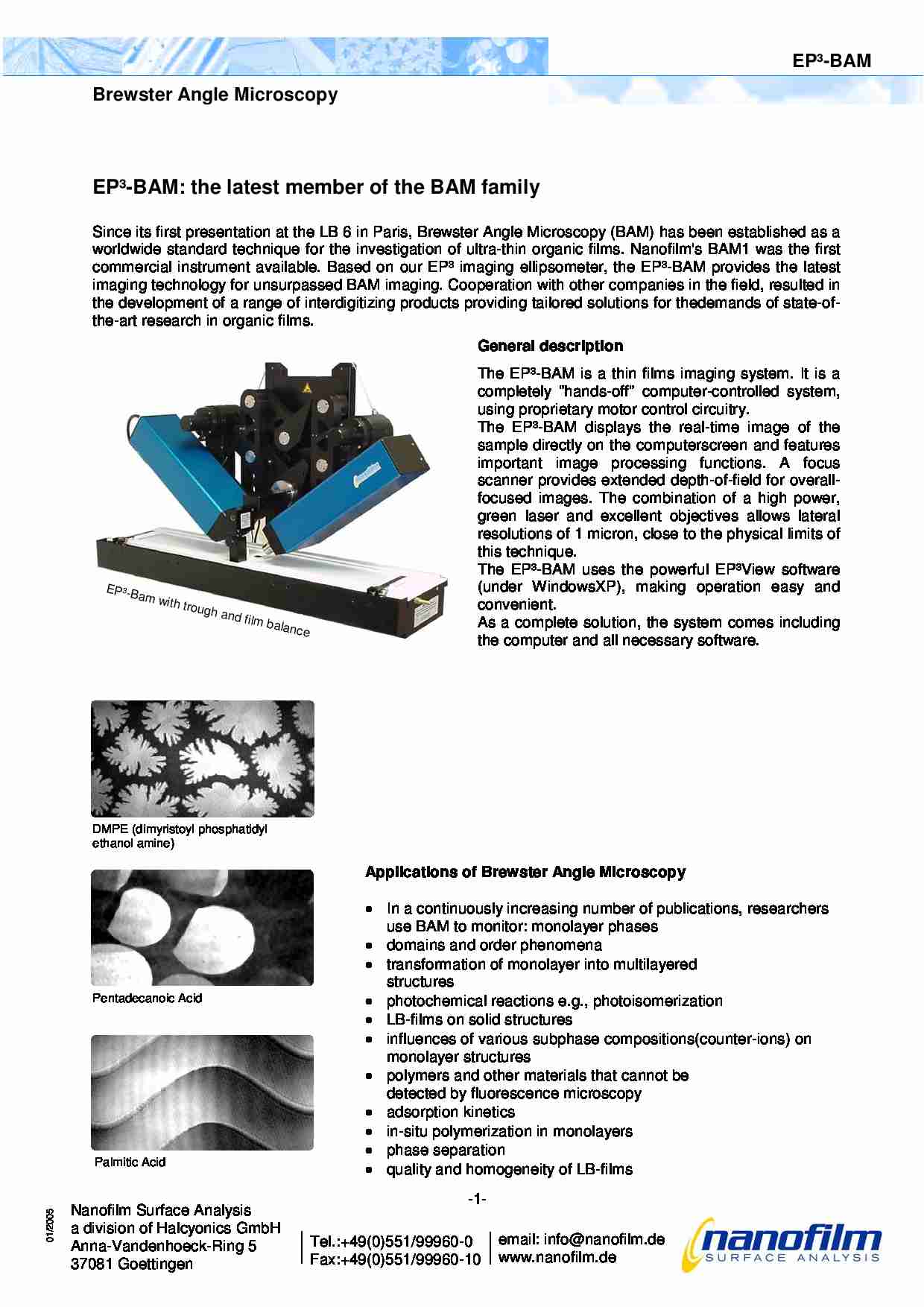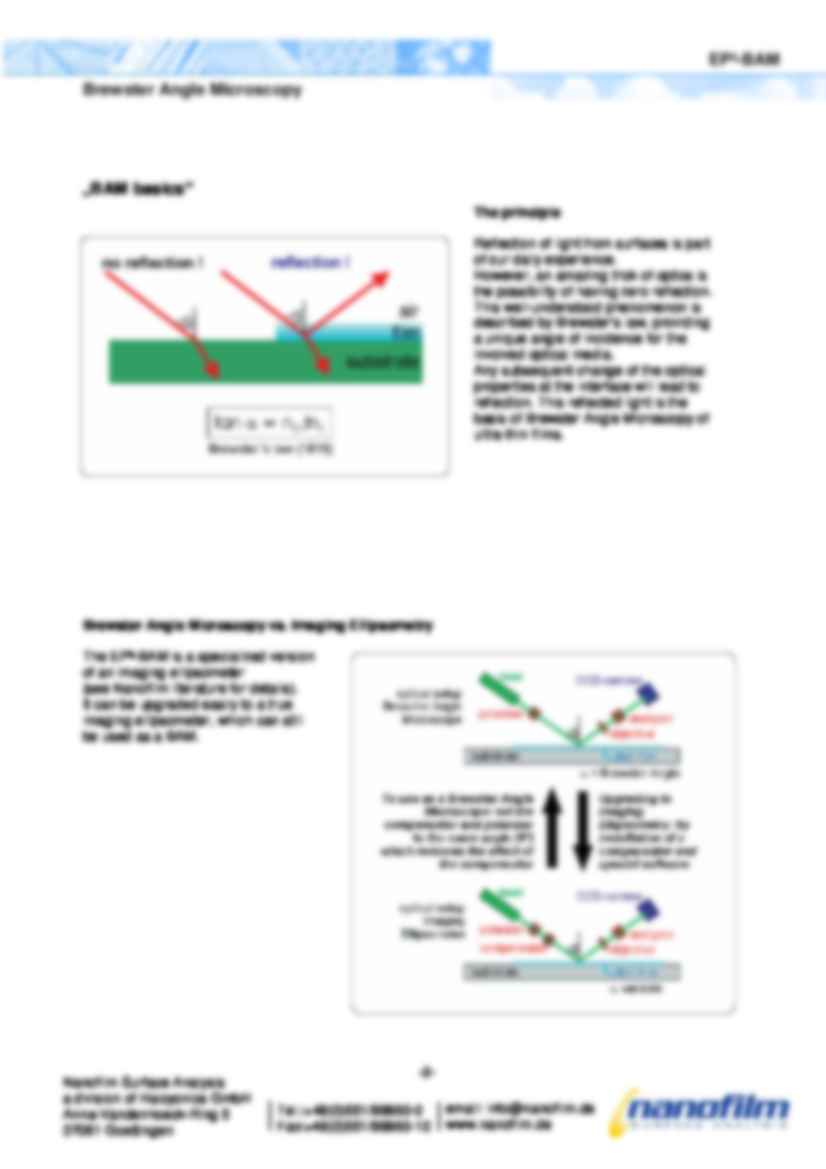To tylko jedna z 2 stron tej notatki. Zaloguj się aby zobaczyć ten dokument.
Zobacz
całą notatkę


EP³-BAM Brewster Angle Microscopy EP³-BAM: the latest member of the BAM family Since its first presentation at the LB 6 in Paris, Brewster Angle Microscopy (BAM) has been established as a worldwide standard technique for the investigation of ultra-thin organic films. Nanofilm's BAM1 was the first commercial instrument available. Based on our EP³ imaging ellipsometer, the EP³-BAM provides the latest imaging technology for unsurpassed BAM imaging. Cooperation with other companies in the field, resulted in the development of a range of interdigitizing products providing tailored solutions for thedemands of state-of- the-art research in organic films. General description The EP³-BAM is a thin films imaging system. It is a completely ”hands-off” computer-controlled system, using proprietary motor control circuitry. The EP³-BAM displays the real-time image of the sample directly on the computerscreen and features important image processing functions. A focus scanner provides extended depth-of-field for overall- focused images. The combination of a high power, green laser and excellent objectives allows lateral resolutions of 1 micron, close to the physical limits of this technique. The EP³-BAM uses the powerful EP³View software (under WindowsXP), making operation easy and convenient. As a complete solution, the system comes including the computer and all necessary software. EP³-Bam with trou gh and film balance 01 /20 0 5 -1- Nanofilm Surface Analysis a division of Halcyonics GmbH Anna-Vandenhoeck-Ring 5 37081 Goettingen Tel.:+49(0)551/99960-0 Fax:+49(0)551/99960-10 email: info@nanofilm.de www.nanofilm.de DMPE (dimyristoyl phosphatidyl ethanol amine) Pentadecanoic Acid Applications of Brewster Angle Microscopy • In a continuously increasing number of publications, researchers use BAM to monitor: monolayer phases • domains and order phenomena • transformation of monolayer into multilayered structures • photochemical reactions e.g., photoisomerization • LB-films on solid structures • influences of various subphase compositions(counter-ions) on monolayer structures • polymers and other materials that cannot be detected by fluorescence microscopy • adsorption kinetics • in-situ polymerization in monolayers • phase separation • quality and homogeneity of LB-films Palmitic Acid The principle Reflection of light from surfaces is part of our daily experience. However, an amazing trick of optics is the possibility of having zero reflection. This well-understood phenomenon is
... zobacz całą notatkę




Komentarze użytkowników (0)